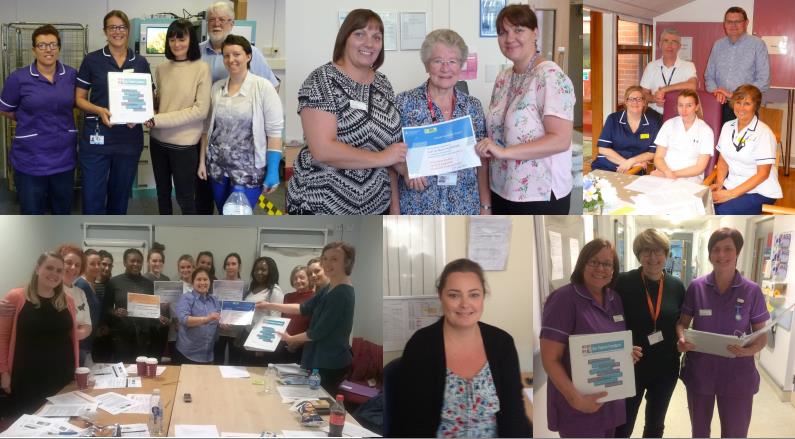Claire Marsh, Patient and Public Engagement Lead at the Improvement Academy, writes about the importance of not solely relying on data management to improve patient experience and how much can be gained from a more human approach.

There is a sad irony in the patient experience agenda at present: we know we need to listen more to patients and their carers but perhaps our focus on data management as a means to do so, means we hear people less.
A patient experience data industry has emerged focusing on feedback collection through mandated surveys (e.g. inpatient survey, the Friends and Family Test), optional surveys (e.g. for specific clinical areas), as well as proposals for interrogating sources of feedback that occur more spontaneously (e.g. complaints, online reviews). Unfortunately, evidence indicates these datasets are rarely used by frontline staff because they lack detail and there is often a time-lag between collection and analysis. This has to change: collecting feedback that is not used to improve care is bad for patients and bad for staff. In response, the Yorkshire Quality and Safety Research Team in partnership with the Yorkshire and Humber Improvement Academy developed the Yorkshire Patient Experience Toolkit through action research with staff and patients in six different in-patient settings. In doing so, we revised some deeply-held assumptions about ‘feedback as data’ that are largely shared by our research peers.
First, we realised we had been trained to seek simplistic instructions from feedback: what are staff doing wrong that needs to be put right? By putting survey data aside and simply talking and listening to patients and their carers we revealed a more complex picture. Rarely did feedback state that staff were doing things ‘wrong’. Instead, we learnt how complex social issues (e.g. loneliness or anxiety about their loved ones at home) impact on experiences of care. The hard work came not in generating ‘the solution’ from the data but in helping staff to reflect, empathise and overcome their own upset about not being able to solve all problems yet still make positive changes.
Second, we recognised an overwhelming desire to ‘roll out’ solutions quickly. This may work for quick fix issues (e.g. replacing an uncomfortable mattress) but does not work for improving the ways staff relate to patients. Instead, small, cyclical tests of change direct from improvement methodology (e.g. starting with 2 nurses over 1 day) enabled staff to learn what was feasible, acceptable to staff and meaningful for patients.
Third, we had to relinquish the desire for quantitative measurement of impact. Whilst this worked for simple, individual issues – e.g. numbers of uncomfortable chairs replaced – when it came to complex social needs, there was no easy ‘measure’ but there were impacts. The value was in enhancement of human processes of listening, relating and responding. Patient experience may not quantitatively improve incrementally because the issues do not go away. Loneliness cannot be solved but the human responses instigated as a result of feedback are however felt – patients and carers noticed that things were in place to help them and this enhances their experience. It is clearly good for staff morale too.
Finally, we learnt that a more people-centred approach to improving patient experience requires sensitive and skilled facilitation, coaching and mentoring throughout. People from across staff teams (not just nurses) need to be brought together to view patient experience as a common goal. Staff and volunteers need to be helped to develop capacity for talking, listening to and interpreting feedback. Reflective and motivating processes that help staff to digest feedback and work on sustained changes over time are crucial.
Placing our faith in an objective data management approach to improve patient experience at the frontline is dangerous. The fixation on right solutions, the desire to roll-out changes quickly and an assumption that impact measurement as depicted on a graph, distract emphasis away from the human interactions that patients, carers and staff need. Large datasets have their place in large organisations but perhaps are best kept away from frontline care.
Sheard L, Marsh C, Mills T, Peacock R, Langley J, Partridge R, et al. Using patient experience data to develop a patient experience toolkit to improve hospital care: a mixed-methods study. Health Serv Deliv Res 2019;7(36)
This blog seeks to capture and acknowledge the collective findings of a large and diverse team of co-researchers that included patient volunteers (Richard Eastoe, Philip Elphick, Sheila Furness, Saleena Khatun, Linda Lovett, Pat Newdall, Wendy Paley and Fran Senior); ward staff led by Dawn Benson, Julie Dean, Jennie Foster, Amanda Greenwood, Bryony Sutcliffe, Honeylette Taleon, Claire Townsend, Clair Wilby and Pat Williamson. It also included a core research team (Rose Peacock, Laura Sheard, Tom Mills, Rebecca Lawton), improvement specialists (Alison Lovatt, Beverley Slater) and a steering group (Shelley Bailey, Chris Brown, Paul Chamberlain, Anne Dell, Rosie Horsman, Tahir Idris, Mel Jackson, Krystina Kozlowska, Alison Lovatt, Jane O’Hara, Maggie Peat, Alun Pymer, Ann-Marie Riley, Beverley Slater, Peter Walsh and Sally-Anne Wilson.)

